Preparations began days in advance. The Avenida da Republica was closed, making the street in front of our house a main thoroughfare. Stages were erected. Kiosks sprung up on the square, along the river, and on various street corners. Pigs, geese, and even an alpaca were strolled into town.
Setecentista
Setecentista was celebrated in VRSA this past weekend. There had been an event by the same name last year…but it paled in comparison. To say that this year’s event was 10 times larger is not an exaggeration. The city’s website explained why:
Welcome to the Historical Festival Vila Real de Santo António Setecentista 2nd edition, organized by Vila Real de Santo António municipality. This year, 250 years after the laying of the first stone of the then "Nova Vila de Santo António de Arenilha," we present three days of festival which visitors can immerse themselves in the history and culture of the Enlightenment period that marked the 18th century. From reenactments to processions, interactive shows, animations, and concerts, there will be plenty of reasons to visit the city, its historic center, and travel back in time to the Age of Enlightenment. The event aims to mark the 248th anniversary of the festivities of the refoundation of the town, which took place on May 13, 1776, already under the name of Vila Real de Santo António. — cm-vrsa.pt
The party began at 16:00 on Friday and continued until midnight throughout the weekend. Pigs were roasted in open pits … craft beers were consumed … puppet shows, acrobats, jugglers, duels, and a wonderful bagpipe and drum ensemble popped up on street corners at 30-minute intervals. On Saturday night the “actors” paraded around the downtown area.
The Marquês
I believe the guy leading the parade is the Marquês de Pombal…which is easier to say (and write) than his name, Sebastião José de Carvalho e Melo. The Marquês’ place in Portuguese history is a bit complicated. Born to a “lower noble” family he used marriage to elevate his status. His first marriage was to a woman 12 years older than he and childless. She died at age 51 and left all her assets to him. But he hit the jackpot when he married an Austrian Countess with 13 names (Eleonore Ernestine Eva Wolfganga Gräfin von und zu Daun auf Sassenheim und Callaborn) who happened to be friends with the Portuguese Queen Maria Ana (also of Austrian descent). Perhaps through this friendship, Melo’s position within the court was elevated to “Prime Minister”. Then opportunity met with self-promotion as the King installed him to oversee the rebuilding of Lisbon following the 1755 earthquake.1
When the King asked Melo what to do he said, “Bury the dead. Feed the living. Rebuild the city.” And so while the King hung out in Belem, Melo was sent to Lisbon. He ordered soldiers to collect the dead, weigh them down with stones, and throw them in the river. He commandeered ships’ cargo in the harbor and ordered merchants not to raise food prices. He prohibited able-bodied men from leaving the city and forced them to work to clear the rubble and rebuild the city.
He published a manifesto entitled: “The Advantages That the King of Portugal Can Obtain from the Earthquake of 1755”. He also wrote numerous articles under assumed names attacking his enemies and glorifying his accomplishments.2
While he is often credited with designing the new city, the real credit is shared by three men: Carlos Mardel, Eugénio dos Santos, and Manuel da Maia.
He is credited with the design of VRSA…however, he never visited this area. Instead, he sent a portion of the Lisbon plan to be recreated in Algarve.
The Pope
Among the Marquês’ “accomplishments,” we also have the expelling of the Jesuits. Again, under an assumed name, he published articles that proclaimed that before the Jesuits arrived Portugal was a powerful, religious, and prosperous nation. He accused the Jesuits of plotting against the King and had many arrested and tortured. With the help of the Cardinal he had them expelled from the country and its colonies. Of course, along the way, he confiscated their property keeping much of it for himself. He launched a campaign that extended to France, Spain, and Germany suggesting that the Jesuits stood in the way of the Age of Enlightenment. Ultimately he convinced Pope Clemente (Bento) XIV to abolish the Jesuits…an order that remained until 1814.
The King
Unfortunately, for Melo, the King died in 1777. He attempted to prevent Princess Maria Francisca from succeeding the King…but failed. He then attempted to convince her that “no one has sufficient knowledge and vision to replace me”. But the Queen would have none of it. She exiled him to his estate and freed many of the prisoners he had incarcerated.
Unfortunately, for the Queen, she was declared insane at age 57. Many believe she had been tormented throughout her life by her father’s acceptance of Pombal’s excesses.
But that doesn’t mean we shouldn’t have a party. Perhaps have your portrait sketched by an 18th-century artist.
Ride a man-powered Ferris wheel.
And enjoy bagpipers and drummers play on the street corner.
Até à próxima semana, vamos à festa,
Nanc
My research comes from many sources. If you are interested in this topic, I highly recommend Martin Page’s, The First Global Village: How Portugal Changed the World.
The 18th-century equivalent of arranging articles with the National Enquirer.

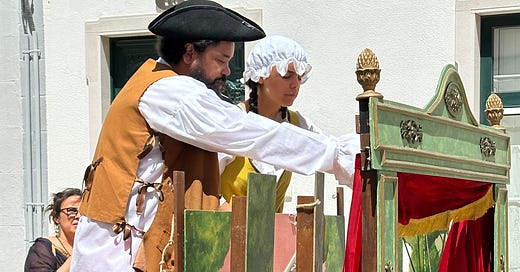




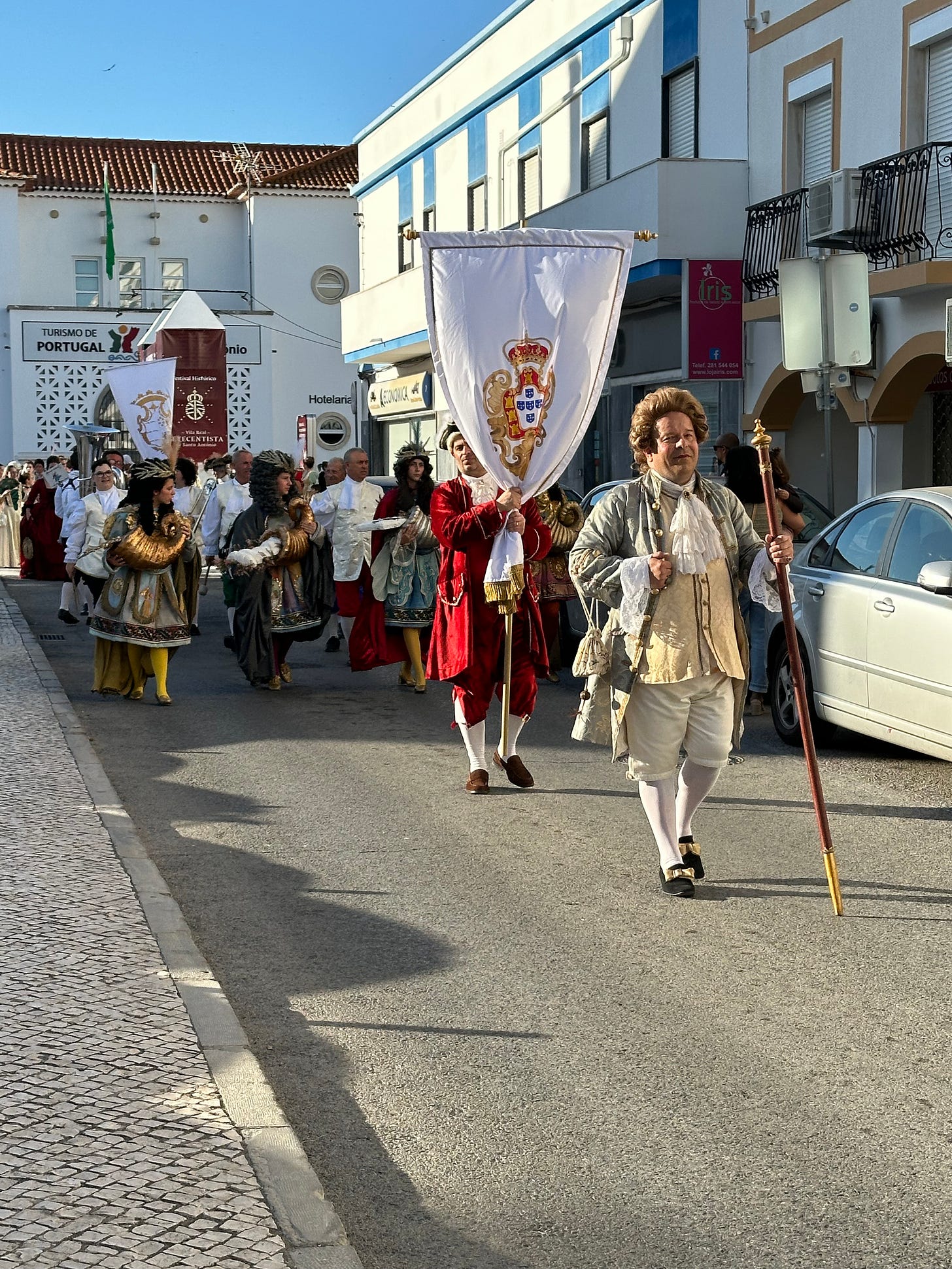
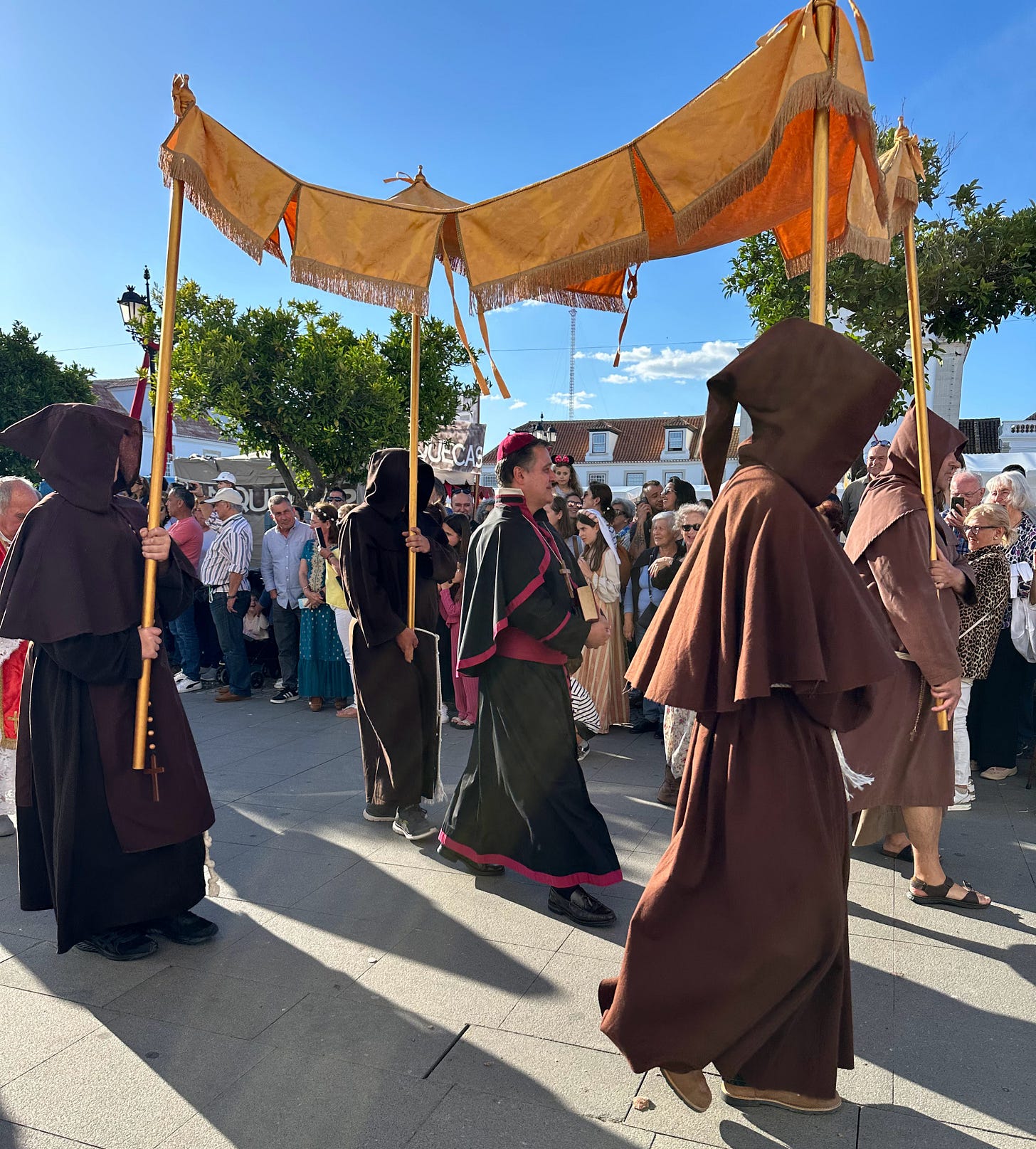
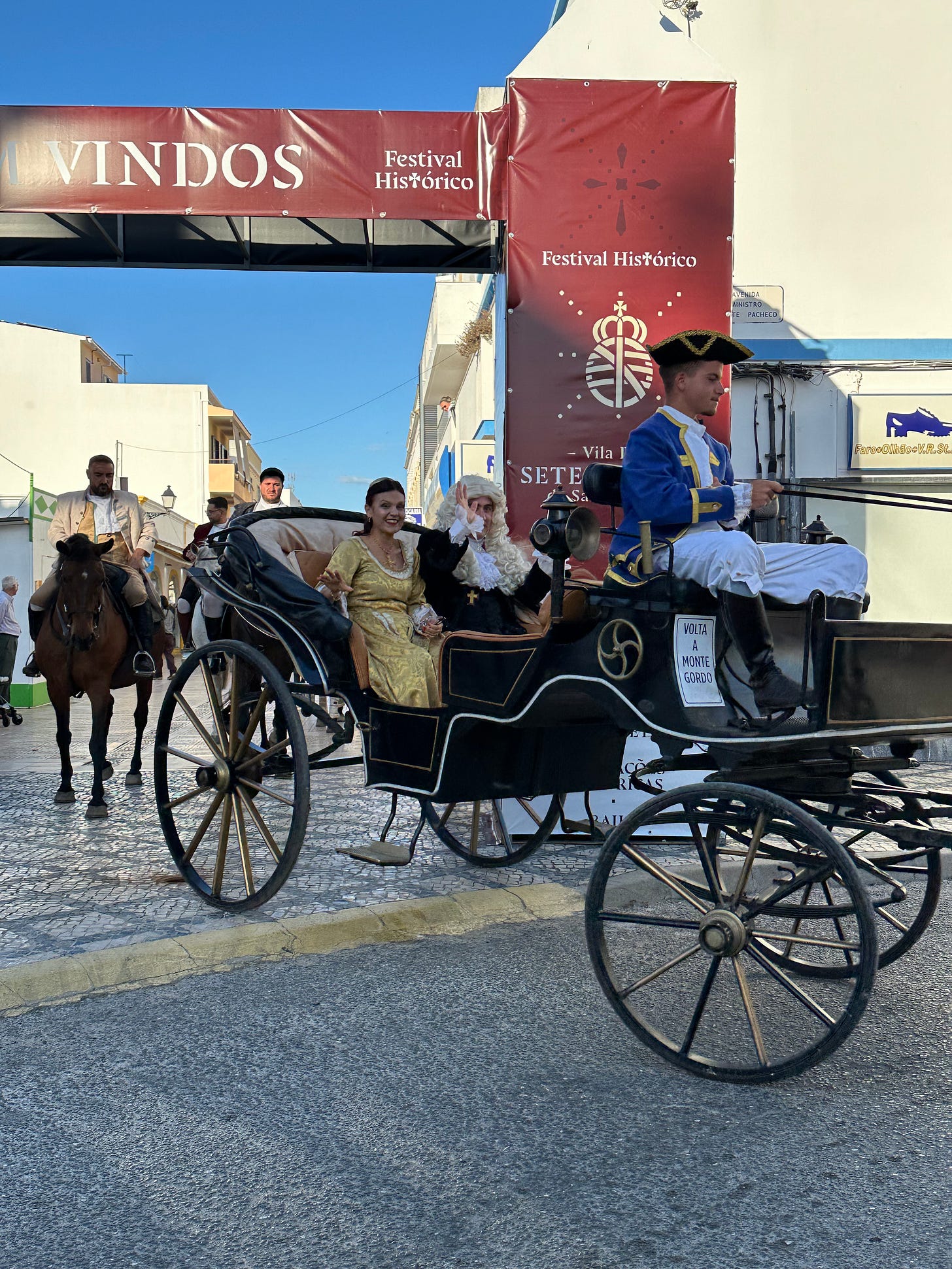
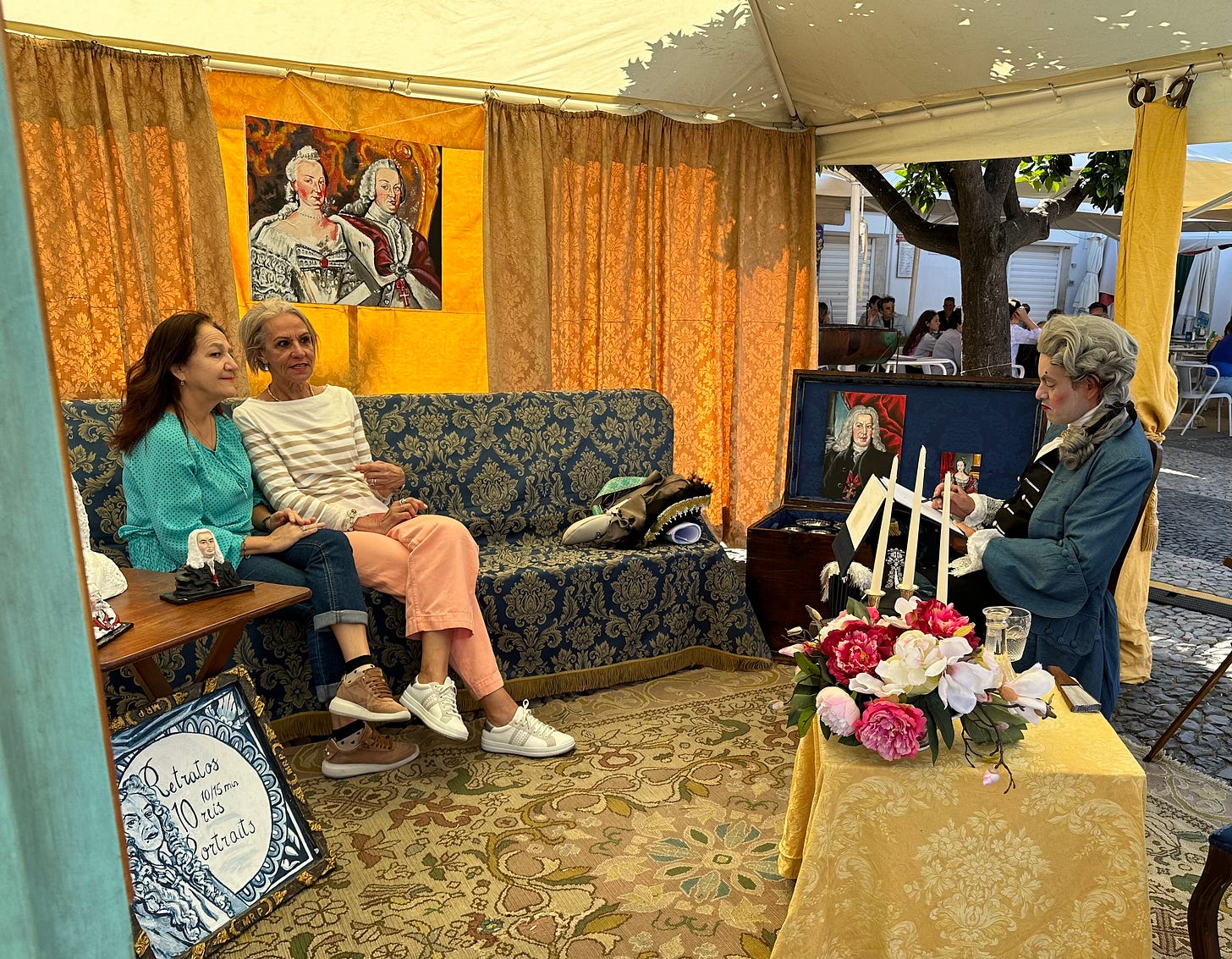
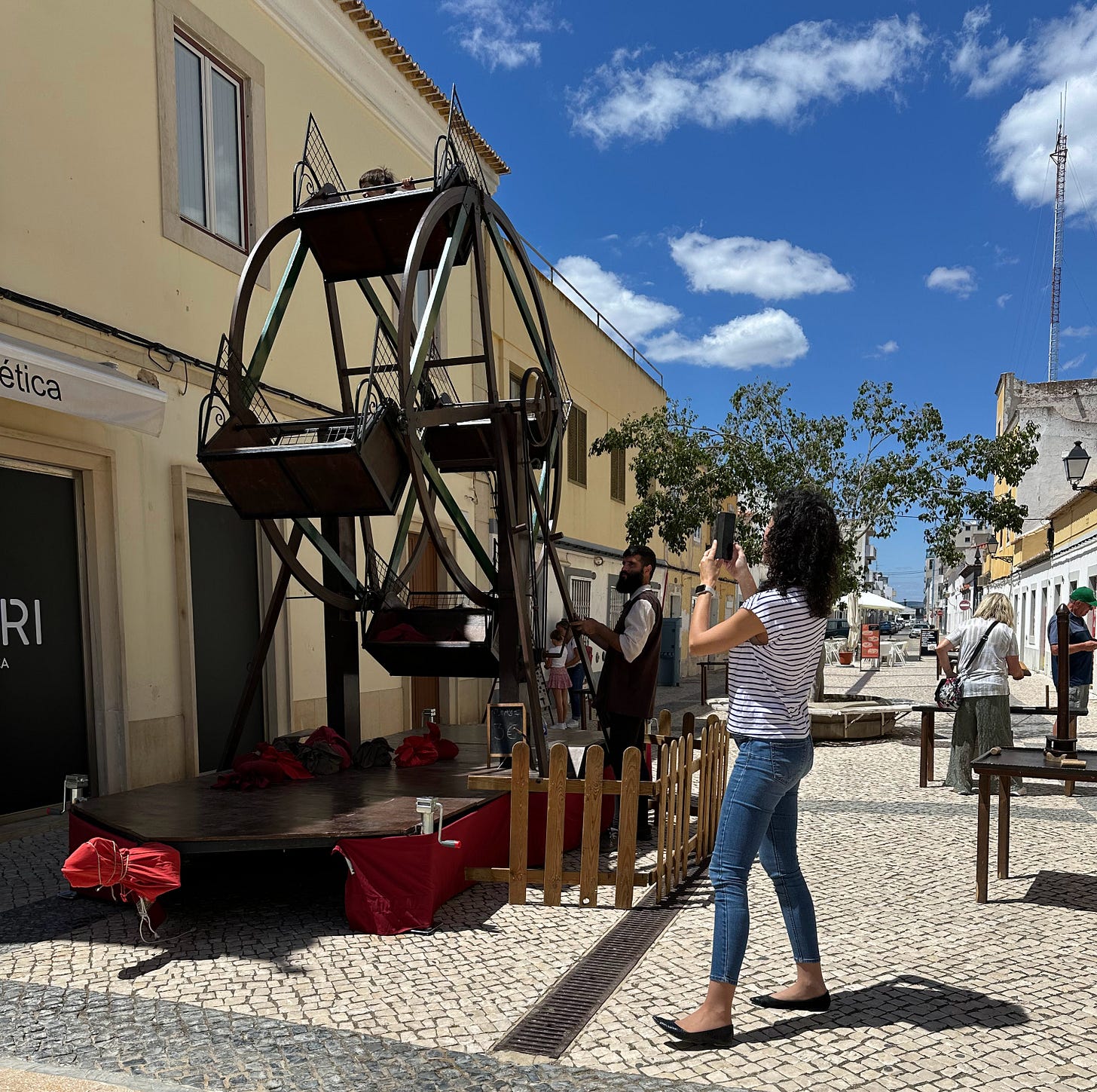
Your writing is phenomenal and so fun! And educational. Thanks Nanc.
Best posting ever. Very enjoyable.